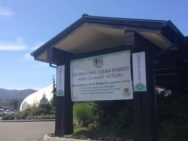
A solution to California’s disasters – Microgrids
After years of deteriorating power lines owned by PG&E, California’s biggest utility, plus months of windy wildfires, warming California is wondering how to keep the lights on. Small communities all over the state have been pioneering the answer for decades
Take back control – Build your own utility
The Blue Lake Rancheria tribe in Mad River, Northern California has built a microgrid on its 100-acre reservation, a stitching-together of technologies including wind turbines, solar panels, storage batteries and its own power lines that integrates with the outside utility network or can stand alone from it. It is a state-of-the-art system — and an indicator of what might be the future for every American.
In early October, Pacific Gas & Electric cut power to more than 2 million people across Northern California, including all those who live in rural Humboldt County, where redwood forests fringe the wild edge of the continent. The shut-off aimed to reduce the risk of wildfire, and as the region sat in darkness, the tribe’s multimillion-dollar investment in its power system glowed.
Responding to public needs, the tribe transformed a hotel conference room into a newsroom so the local paper could publish. The reservation’s gas station and mini mart were among the only ones open, drawing a nearly mile-long line of cars.
The Blue Lake Rancheria served more than 10,000 people during the day-long outage, by some estimates, roughly 8 percent of Humboldt’s population. And the tribe suddenly became a vital part of its emergency response.
“The irony was not lost on us,” said Jason Ramos, a member of the tribal council who ran emergency operations during the blackout. “When these power cuts started, we looked like geniuses for what we had done. But in truth, we didn’t really see them coming when we made our decision.”
California, a hive of rapid private-sector innovation, is adjusting slowly to the accelerating changes in its climate. The sharp transition between heavy rains and hot, windy weather has primed the landscape for wildfires, which have burned larger and deadlier in recent years than at any time in history.
After an autumn of power cuts and economic losses, the reliability of California’s electricity grid and of its three largest investor-owned utilities is among the most pressing public policy issues facing Gov. Gavin Newsom (D). The state lags behind some on the East Coast, where Tropical Storm Irene swamped towns in 2011, causing blackouts and a rethinking of how to strengthen a vulnerable electrical grid.
The ideas under consideration here are complicated by the bankruptcy of PG&E, the state’s largest investor-owned utility. All would require a measure of public money — such as a state takeover of the grid or breaking up utilities into municipal agencies — and changes to a regulatory system yet to adapt to California’s new climate-driven threats.
“It’s like we have a high schooler stuck in the sixth …